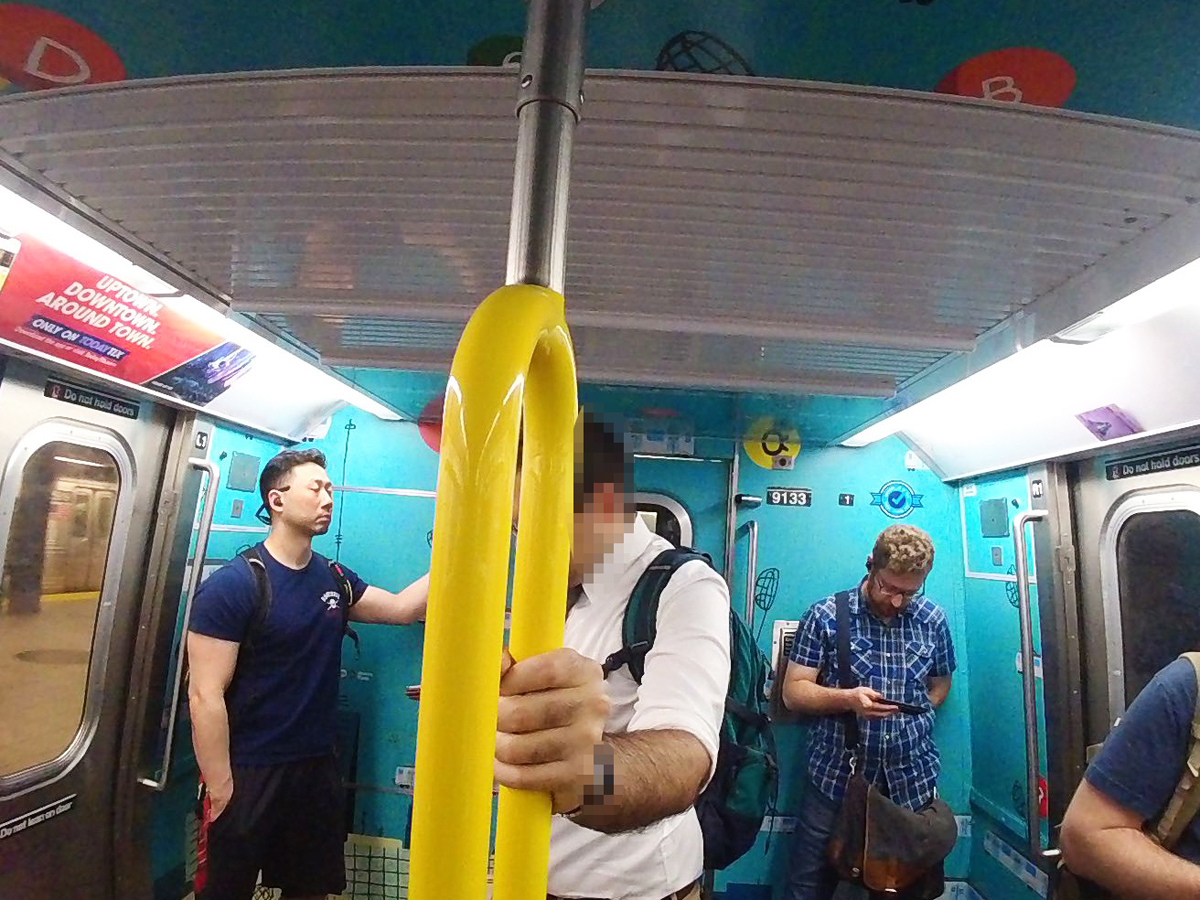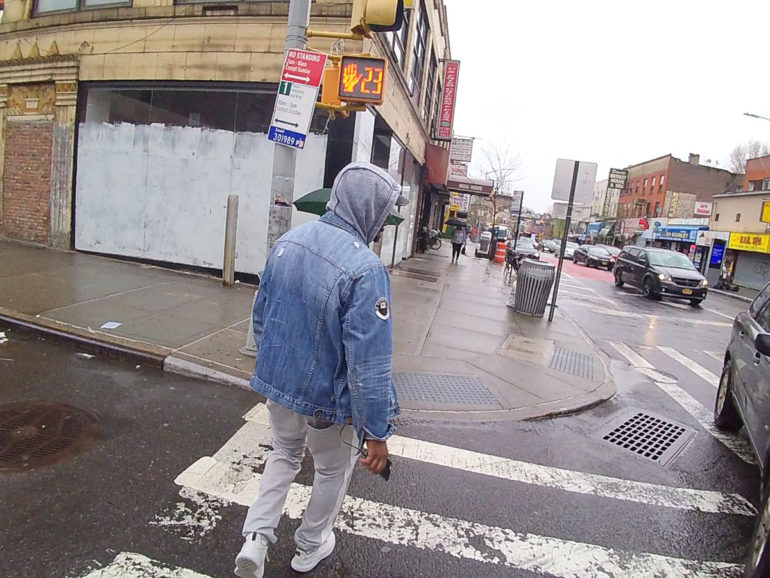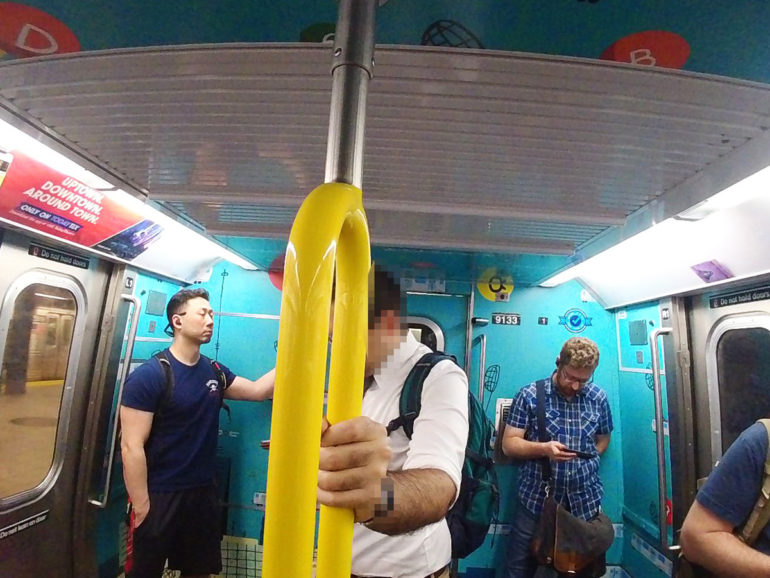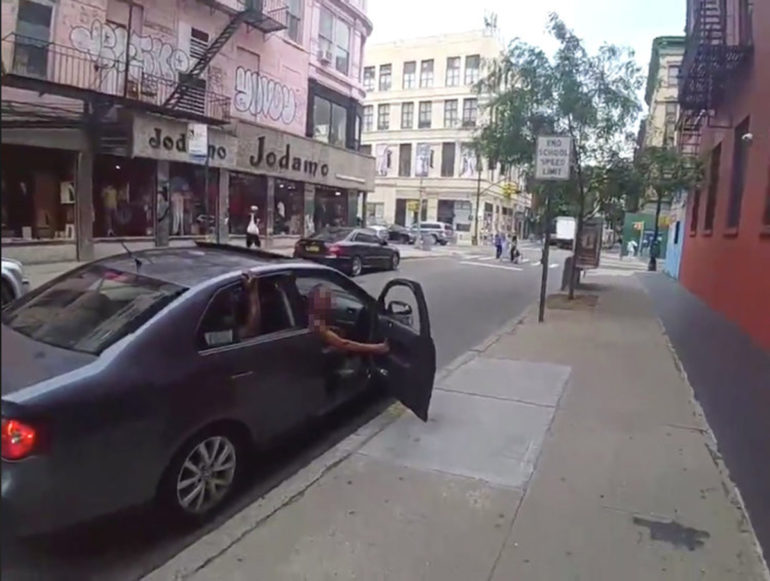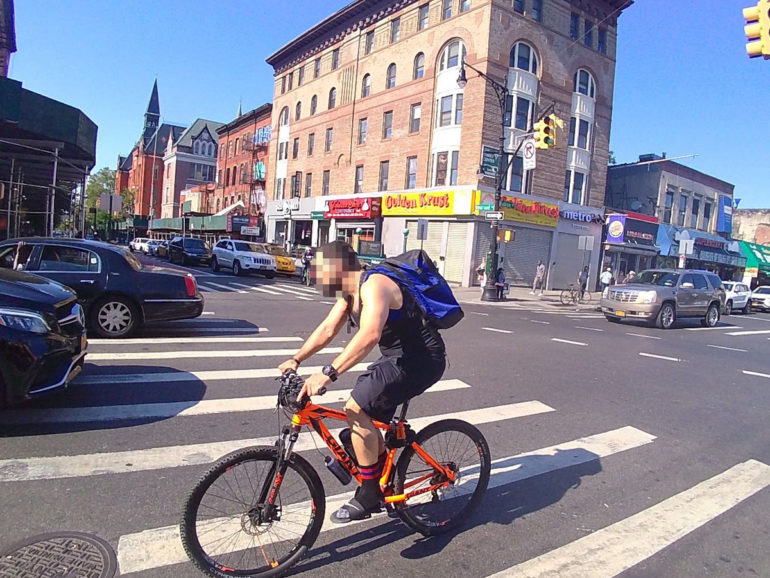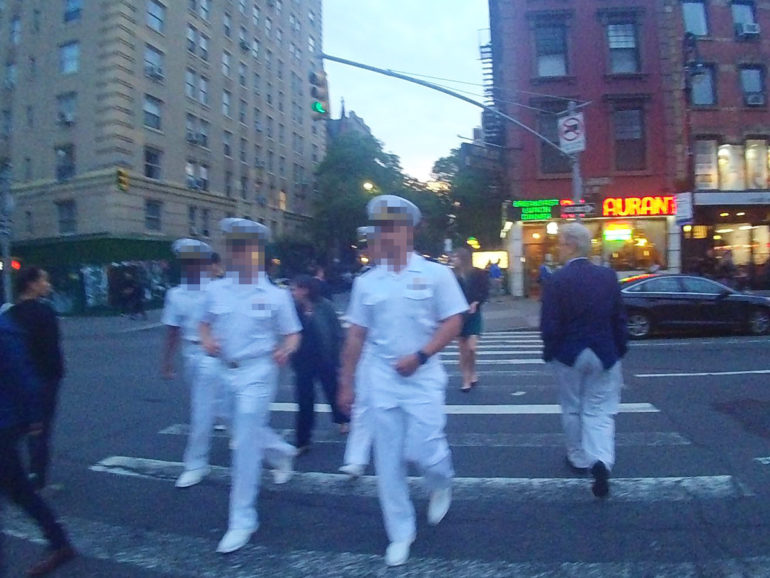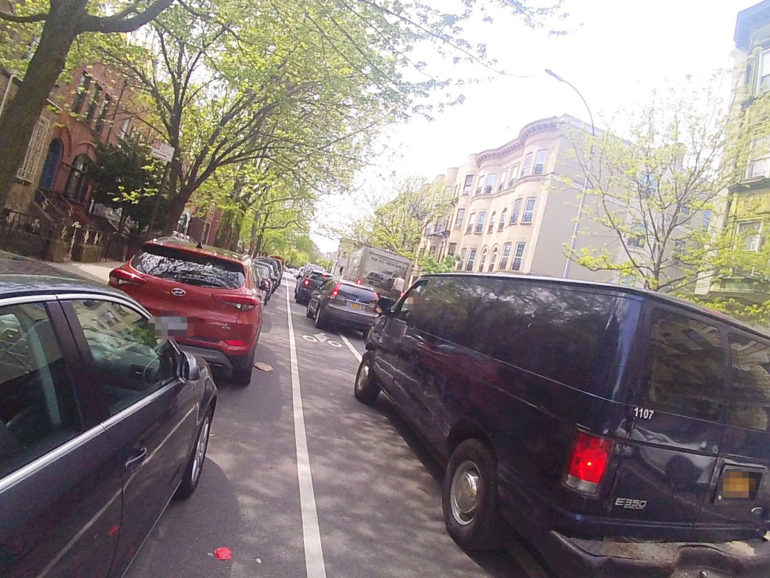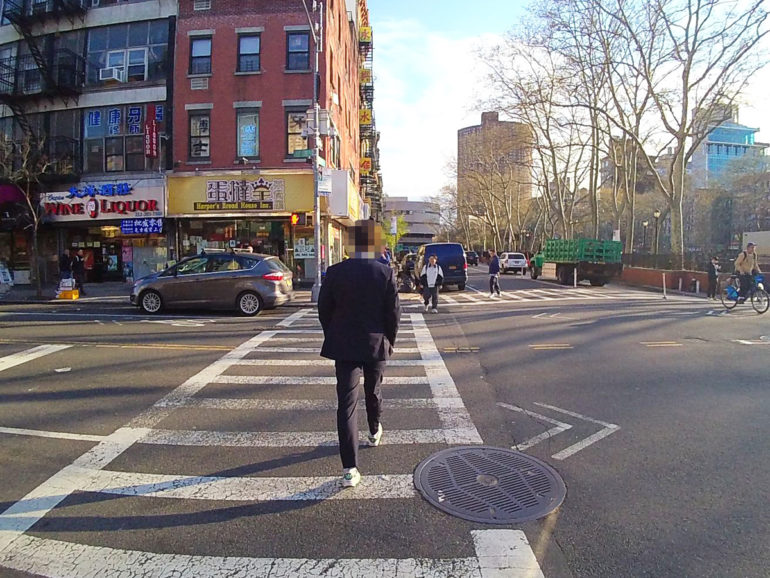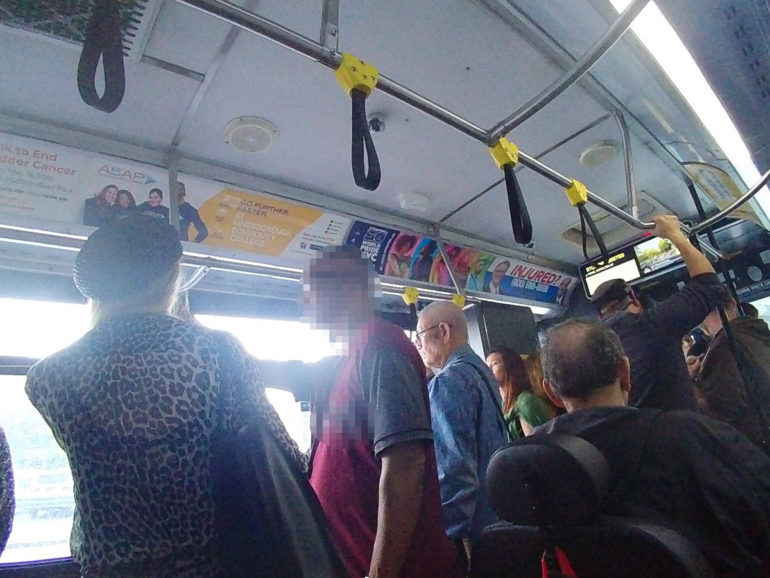Last Updated on 10/01/2020 by Chris Gampat
All images by Sherri Nienass Littlefield. Used with permission.
Sherri Nienass Littlefield, the Associate Director of Foley Gallery and a photographer in her own right, has spent the better part of the last four months developing a new body of work, Calling Men, capturing documentary-style images of the men who cat-call her on a regular basis. Through the use of special glasses (developed by Snapchat), Littlefield is able to subtly photograph her cat-callers with her sunglasses in a less confrontational/direct way than a typical camera allows. The images she captures speak both to the frequency and severity of this universally shared female experience.
All images by Sherri Nienass Littlefield. Used with permission.
Phoblographer: What originally inspired and prompted you to make this project? How long have you been working on it?
SL: I’ve always been fascinated by the act of cat-calling. Ever since I was a teenager, I’ve dealt with men cat-calling me from the street, their cars, anywhere, really… I don’t understand why it’s a thing people do. I understand men being flirtatious in social gatherings or in bars and parties, but when I’m alone walking on the street, there’s no need to shout at me. Like most things in life, I find humor in these situations and decided to make a project of it. The idea has been on my mind since 2011, while I was in graduate school. The annoyance of these scenarios prompted this project. I’ve been working on this since mid-April of 2019.
Phoblographer: If you didn’t have the extra level of discrete/subtle photography via the snap glasses, do you think you would have still done this project? What level of safety/ protection do you feel it provides you? Have there been times you wanted to take a photo but the scenario didn’t feel safe?
SL: I don’t think I would have taken on this project without the discreet convenience of my Snap! Spectacles. The process of taking an image is very simple, I press a button on my glasses, lights briefly flash, and the photo is taken. My Spectacles appear (and double) as a pair of sunglasses, unlike a camera that I’d have to hold up to my face, focus, and photograph with. My Spectacles offer a layer of safety because of their plain appearance. Carrying an expensive camera brings a layer of danger because of it’s retail value. There have been times I’ve walked away if a man is more aggressive than usual, or steps and attempts to block my path. There have been times I’ve accidentally taken a video instead of an image and I quickly walk away. Some, but not all men, already have a level of hostility while they shout something at me, so I’d rather not elevate it with rotating lights facing their direction.
Phoblographer: Are there aspects of the project you would like to do that haven’t yet felt possible (additional components that might be restricted by sense of safety)?
SL: I think the project being done through the Spectacles shows the cat-caller in a way that is true to form. If I had a camera and prepped to take the image the cat-caller would have time to leave, turn around, or even pose and smile… The images aren’t the best quality because of how they’re taken, but they’re genuine and that is an important part of the work for me.
Phoblographer: What do you hope to communicate with this project? What are your ultimate goals/ outcome for the project?
SL: I’d like to communicate that cat-calling is stupid, the men doing it look stupid, and that women don’t enjoy being on the other end of it. I’d like for men to reflect on their behavior and realize that this isn’t okay. Women aren’t to be used for an authoritative power-trip.
I’d like to share two stories.
- My husband is an amazing man who will stop cat-calling men when he sees it. He once told me a story about seeing a man cat-call a woman, and he said, “Hey man, you shouldn’t do that. Just let her walk to work.” The cat-calling man asked, “Why not, I’m complimenting her?” My husband explained that it’s disrespectful and that women don’t like being shouted at like pieces of meat. He explained, “My wife gets that a lot, and she hates it.” The man was taken back and said, “Well I’d never cat-call a married woman!” Which brought my husband to comment, “You shouldn’t cat call ANY WOMAN!” They actually had an insightful conversation — I wish more men would support women (not just the women they’re with) in this way.
-
When I was working at the Savannah College of Art and Design, we had a large delivery that required the assistance of the entire sculpture department. While I helped my colleagues unload a truck, the driver kept complimenting my long legs and figure. After a couple comments, to my surprise, my coworker stepped between the driver and I, faced me and said, “I’m so sorry you have to deal with men like this, harassing you like this in your place of work. This man is a poor representation of how a man should act, and I’m sorry.” My coworker intentionally said this in audible range of the driver, and the driver didn’t speak to me during the rest of the unloading process.
Small gestures like this can send a clear message of distaste for cat-calling men and support of women. I wish more men would step up and speak out against harassment as it happens, and not after the fact.
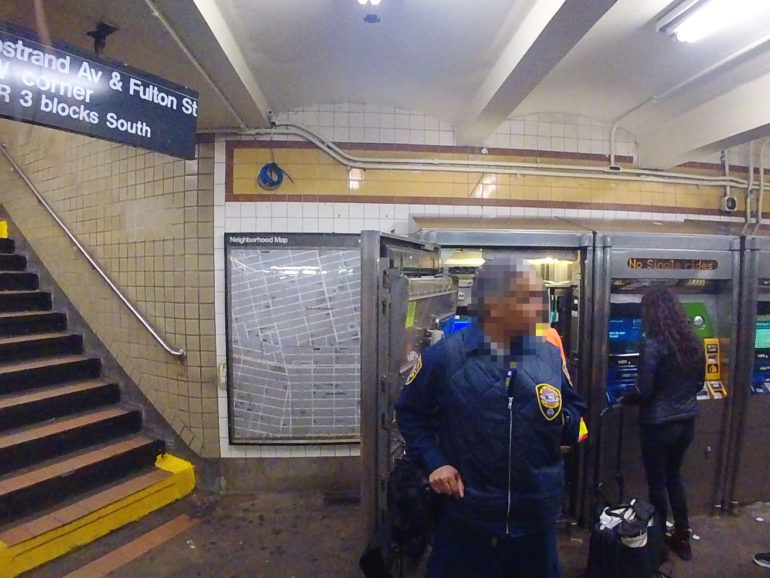
Phoblographer: What made you decide to censor their faces? Is it out of protecting yourself from them should they realize you photographed them, protecting the identities of the cat-callers, or from an entirely different place of motivation?
SL: I firmly believe that people can change and I don’t want to ruin anyone’s career or future. One can argue they’re doing it to themselves, but I’ve said and done things in the past that I’m not proud of. Although I find these men annoying and disrespectful, I hold no grudges against them. I don’t know their background or if they had a positive father or male figure in their life. I truly believe some men don’t realize they’re being offensive. To take the picture, I typically turn around and stare back at the person who cat-called me. I’ll say nothing but take a picture. Sometimes they stare back and me, and I like to think the silence can bring them discomfort. Sometimes I say, “WHAT?” or, “Women don’t like that.” Once in a while, I’ll repeat back what they’ve said if it’s an especially crude or sexual comment – which results in a look of confusion or self-reflection on their part.
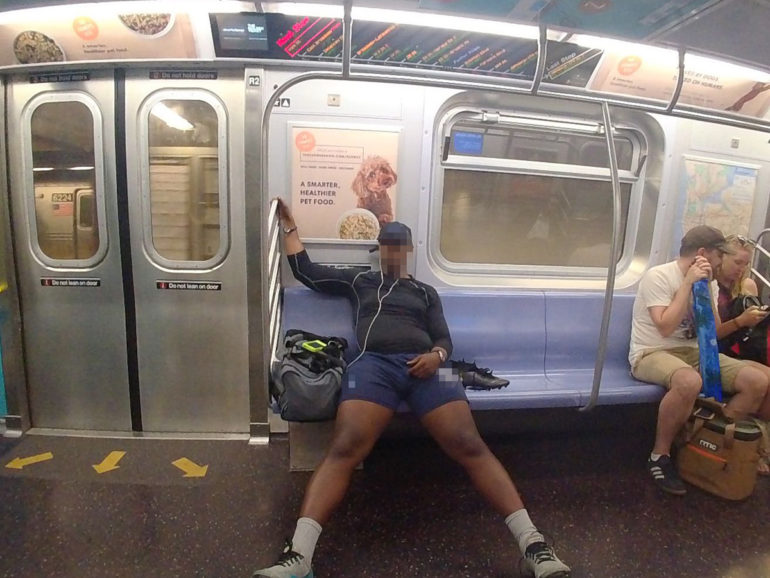
Phoblographer: As you’ve developed this project, have there been moments where you’ve tried to make it even more stylized to suit a unique creative vision of some sort? Of course, you’re reacting to things as they happen and that’s very difficult to do.
SL: A lot of my images are men walking away from me, so the final image is the back or side of their head. I’m trying to get better about getting their faces, and I have sometimes spent 10-15 minutes circling around the person (either crossing the street or something to reposition myself face to face with them) to get an image from the front. The images taken on the subway are typically from men who have cat-called me from the subway platform, so I often follow them onto their car or sit near them. Sunglasses on. Staring back in silence. In terms of style, these images are different from my usual bright, colorful, and polished work. I prefer that they’re imperfect and sort of dirtied with muted colors.
Phoblographer: How frequently do you experience being cat-called? How do those moments make you feel? What would you like the men who make those comments to know?
SL: There are days, weeks, and even months where I don’t experience it at all, especially in winter. During the Spring and Summer months, it picks up a lot. There are triggers to being cat-called, and I believe wearing bright lipstick, dresses, shorts, or high heels contribute. I dress conservatively, not that it matters, but being cat-called makes me feel objectified and annoyed. I’ve met some women who think as I age I’ll miss being cat-called, or think that I should be taking these comments as a compliment instead of an offense, but I won’t. During the summer months, I probably get cat-called once or twice a day. I want men to know that this isn’t okay, and you shouldn’t shout at random women, regardless of if you think you’re complimenting them.
Phoblographer: Can you provide some examples of what the cat-calls you’ve gotten have been so far?
SL: Most recently, a man told me that he’d “love to get between my legs”. Another man shouted at me on an escalator asking where I was going, I didn’t respond. He asked again, “Where are you going? Can I come?” I still didn’t respond. He last shouted, “You’re not that fine, bitch.”
If a man says “hello” or just looks at my body up and down, I do not take a photo. I only take a photo if the man says something about my body or face.
Phoblographer: How do you handle being cat-called in the moment? What informs that decision? How do these experiences influence you as a woman and an artist – are they inextricably linked?
SL: My work is documentary in nature, so the image captures come naturally. I’m still annoyed at being cat-called, but there’s an interesting dynamic to capturing the images of those who do it. I aim to include humor in my work, and these images fall into that category.
Phoblographer: How long do you plan to continue the project?
SL: I will continue this project until I reach 100 photos. I’m currently at 34.


